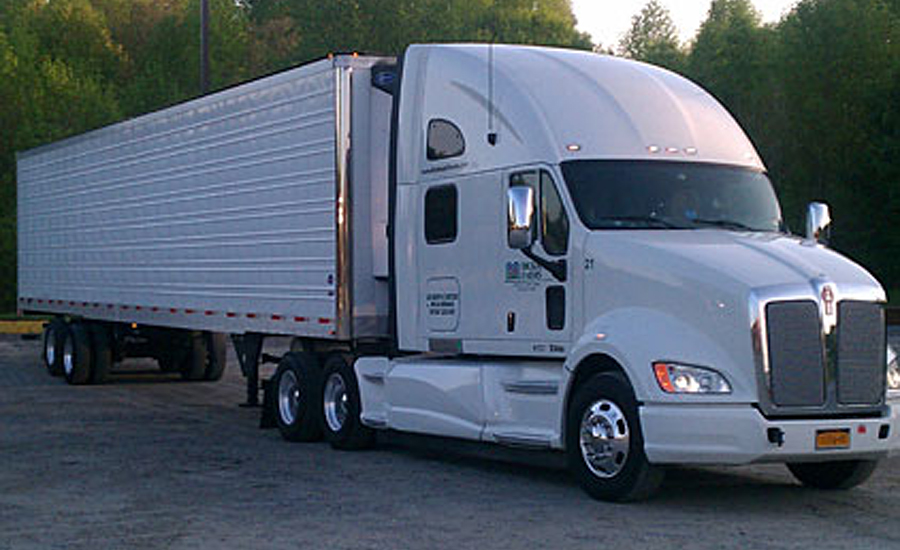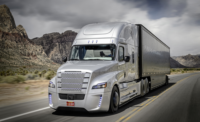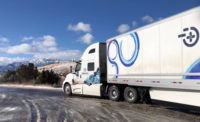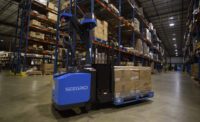Trucking providers such as DAF Trucks, Daimler Trucks, Iveco, MAN Truck & Bus, Scania and Volvo Group competed in the European Truck Platooning Challenge, where self-driving fleet drove in “trains” along the highway to conduct increased testing of freight shipments.
Dutch business is keen to go forward with truck platooning. As evidenced at today’s European Truck Platooning Challenge, in the period ahead Albert Heijn, Jumbo and Unilever want to conduct increased testing of freight shipments with trucks driving in “trains” along the highway. Today minister Schultz van Haegen (Infrastructure and the Environment) welcomed six columns of trucks at Maasvlakte II, which had driven from a number of European cities to Rotterdam over the past several days.
Organized by Rijkswaterstaat, responsible for the design, construction, management and maintenance of the main infrastructure facilities in the Netherlands, the contest involves truck platooning, which means that two or three trucks connected by wifi drive in a column, with the first truck determining the speed and route. This enables shorter gaps between following trucks, while freeing up space for other vehicles. The wifi connection between the trucks ensures synchronized braking and can prevent sudden jolt/shock effects. Truck platooning can realize up to 10% fuel savings and reduce CO2 emissions.
“The results of this first ever major try-out in Europe are promising,” says minister Schultz van Haegen. “Truck platooning ensures that transport is cleaner and more efficient. Self-driving vehicles also improve traffic safety because most traffic accidents are due to human error. As the test shows, the technology has come a long way already. What it also makes clear is that we Europeans need to better harmonize rules of the road and rules for drivers. This will open the door for upscaled, cross-border truck platooning. The hands-on experience….will certainly help my colleagues and I discuss the adjustments needed to make self-driving transport a reality.”
The benefits of platooning go beyond road transport, which is more efficient, safer and kinder to the environment, according to Erik Jonnaert, secretary-general of ACEA, the European umbrella organization representing the six truck manufacturers.
“Platooning also reinforces the leadership position of our automotive industry in terms of new technology; this also boosts Europe’s competitive position in the global marketplace,” adds Jonnaert. “Meanwhile, there are still plenty of barriers in place that hinder the launch of this technology. With this in mind, it is good that the Netherlands has taken the lead in positioning these topics high on the European agenda. Cooperation within the EU is crucial in preventing the development of a patchwork of local rules and procedures strangling progress.”
The challenge opened on March 29 with the departure of the first “trains” of trucks from a number of European cities. Columns of trucks from DAF Trucks, Daimler Trucks, Iveco, MAN Truck & Bus, Scania and Volvo Group drove from Sweden, Germany and Belgium to Rotterdam.
As shown by the test, each country has differing procedures for allowing trucks to drive in platoons. Right now, a truck manufacturer has to make separate applications for every country to be crossed. And, every manufacturer has its own wifi system, which prevents the various brands from platooning together. The requirement for truck platoons to carry dedicated number plates in certain countries has been scrapped, and stopping at the border to change plates is now a thing of the past.
Over the past few days the platoons have been closely monitored and filmed from the air. This will identify how other traffic responds to the columns. Meanwhile, a joint study is underway with the Royal Dutch Touring Club (ANWB) to see how road users can be actively involved in the introduction of truck platooning.



